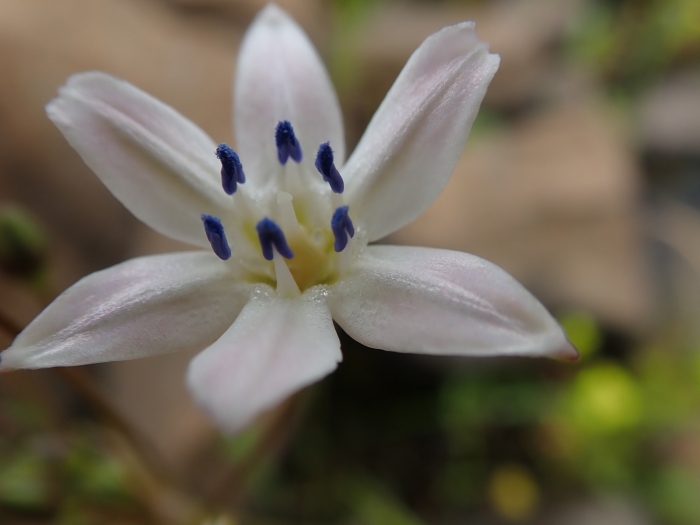Foothill Triteleia
(Triteleia lilacina)
Foothill Triteleia (Triteleia lilacina)
/
/

joergmlpts
CC BY 4.0
Image By:
joergmlpts
Recorded By:
Copyright:
CC BY 4.0
Copyright Notice:
Photo by: joergmlpts | License Type: CC BY 4.0 | License URL: http://creativecommons.org/licenses/by/4.0/ | Rights Holder: joergmlpts | Publisher: iNaturalist | Date Created: 2019-04-03T13:49:51-07:00 |

























Estimated Native Range
Summary
Triteleia lilacina, commonly known as foothill triteleia, is a perennial herb that emerges from a corm. It is native to the grasslands and open woodlands of California’s Central Valley and the Sierra Nevada foothills, particularly areas with serpentine and volcanic soils. This plant typically grows to a height of 12 to 18 inches (30-45 cm) and produces an inflorescence consisting of an umbel-like cluster of flowers. The flowers are white, bowl-shaped, and have shiny vesicles in the center, blooming from late spring to early summer. The flowers are quite showy and attract pollinators such as bees.
Foothill triteleia is valued for its drought tolerance and is often used in wildflower gardens, rock gardens, and naturalized areas. It thrives in full sun to part shade and prefers well-drained soils, making it suitable for xeriscaping. While it is relatively low-maintenance, it benefits from occasional watering during prolonged dry periods. There are no major disease problems associated with this plant, but it can be susceptible to root rot if overwatered or planted in poorly drained soils. It is not known to be invasive and does not have aggressive roots.CC BY-SA 4.0
Foothill triteleia is valued for its drought tolerance and is often used in wildflower gardens, rock gardens, and naturalized areas. It thrives in full sun to part shade and prefers well-drained soils, making it suitable for xeriscaping. While it is relatively low-maintenance, it benefits from occasional watering during prolonged dry periods. There are no major disease problems associated with this plant, but it can be susceptible to root rot if overwatered or planted in poorly drained soils. It is not known to be invasive and does not have aggressive roots.CC BY-SA 4.0
Plant Description
- Plant Type: Bulb
- Height: 1-2 feet
- Width: 0.3-1 feet
- Growth Rate: Moderate
- Flower Color: White
- Flowering Season: Spring
- Leaf Retention: Deciduous
Growth Requirements
- Sun: Full Sun
- Water: Medium
- Drainage: Medium
Common Uses
Bee Garden, Bird Garden, Butterfly Garden, Drought Tolerant, Low Maintenance, Rock Garden
Natural Habitat
Native to the grasslands and open woodlands of California’s Central Valley and the Sierra Nevada foothills, particularly areas with serpentine and volcanic soils
Other Names
Common Names: Lilac Prettyface, Lilac-Flower Wild Hyacinth, Lilac Brodiaea
Scientific Names: , Triteleia lilacina, Brodiaea hyacinthina var. greenei, Brodiaea lilacina, Hesperoscordum lilacinum, Hesperoscordum lilacinum, Triteleia hyacinthina var. greenei,
GBIF Accepted Name: